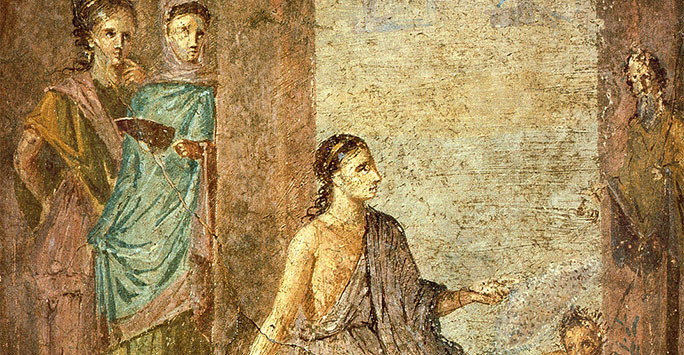
This post is part of the ACE & Creativity series.
In the year1649, the famed Italian Renaissance painter Artemisia Gentileschi wrote to prominent Sicilian art collector Don Antonio Ruffo to negotiate the sale of her paintings. Her position in this was uncompromising. She flatly refused to lower her expectations of the paintings’ value, asserting that she would accept no less than four hundred ducats and the inclusion of a deposit. There would be no more negotiation. “I am going to say no more except what I have in mind,” Artemisia concluded, “that I think Your Most Illustrious Lordship will not suffer any loss with me and that you will find the spirit of Caesar in the soul of a woman.”
Art was Artemisia’s battlefield. As a woman attempting, essentially, to run her own business by personally selling her artwork, she was sure to be met with disdain and condescension. There would be men, such as Don Ruffo, who would think her weak and incapable of negotiation, or who would underappreciate her ability as a painter. So how can we possibly imagine what it was like to be a female career artist not only in Artemisia’s time but fifteen centuries before her birth, during the height of the Roman empire?
This was a question which plagued me somewhat throughout my journey as an Undergraduate. When I was choosing a topic for my dissertation, art and artists were the frontrunners; but I also knew that I wanted to write about women, to attempt to bridge that looming gender gap which still exists in studies of the ancient world. It is not altogether unthinkable that Roman women might have learned to paint, at least as a pastime. But when attempting to research Roman female artists – those who painted for a living, or who sold their work at all – I ended up with a grand total of one ‘extensive’ source: Pliny the Elder’s Natural History, thirty-fifth book.
Pliny’s list of female painters is little more than a footnote in comparison to his detailing of their male counterparts, but it does come with some small, important details. Several prominent female painters are named by Pliny, though details of their lives and artworks remain scant. Iaia of Cyzicus, for one, must have been of considerable skill, “such that her works sold at much higher prices than those of the most celebrated portrait-painters of her day.” (35.40). Presumably active around the late Republic to early Imperial periods, Iaia of Cyzicus is one tempting piece of the puzzle. According to Pliny, Iaia lived in Rome, never married, and was primarily occupied with painting portraits of women, including one notable self-portrait. A woman named Aristarete was the pupil of her father, Nearchus. Another painter named Olympias was relatively elusive, Pliny admits, but he knows that she had a pupil named Autobulus. What we consider to be a world of restriction for women somewhat loosens when we take these women into consideration. Iaia of Cyzicus clearly made enough money on the sale of her paintings to make a decent living, enough that she had no need of a husband to sustain her. Olympias, too, presumably was paid for her services as a tutor. In just a few sentences, we get a glimpse of female financial independence. It’s too tempting not to hope for more.
It would likely be naïve to think that women such as Iaia of Cyzicus, Aristarete, and Olympias did not face considerable opposition in their lives as artists. If their lives were in any way comparable to that of Artemisia Gentileschi they would have struggled and fought and been abused and discounted along the way. The sad fact of the matter is that we don’t know. The lives of these women who have fascinated me so thoroughly have been reduced to a couple of sentences written by a man who didn’t personally know them. We have no surviving artwork with a female signature, no testament to a life of mastery of the arts. But there are hints, nonetheless, of something more than the Roman female ideal, hints of women who navigated the Roman world by their own skill in a world which was not built for them. I hope that we can continue to honour these women. I hope that, however slim the chance, they can reveal themselves to us.